Category: Forest Restoration
-
Mycorrhizal Applications for Backyard Forest Restoration
Lately I have been considering the purchase of a mycorrhizal fungi inoculant to mix into the soil with my Fall/Winter tree plantings.
-
Some Tasks for the Dry Season
Though the dry season is not the best time to be pulling most of the invasive plants, there is still work to be done.
-
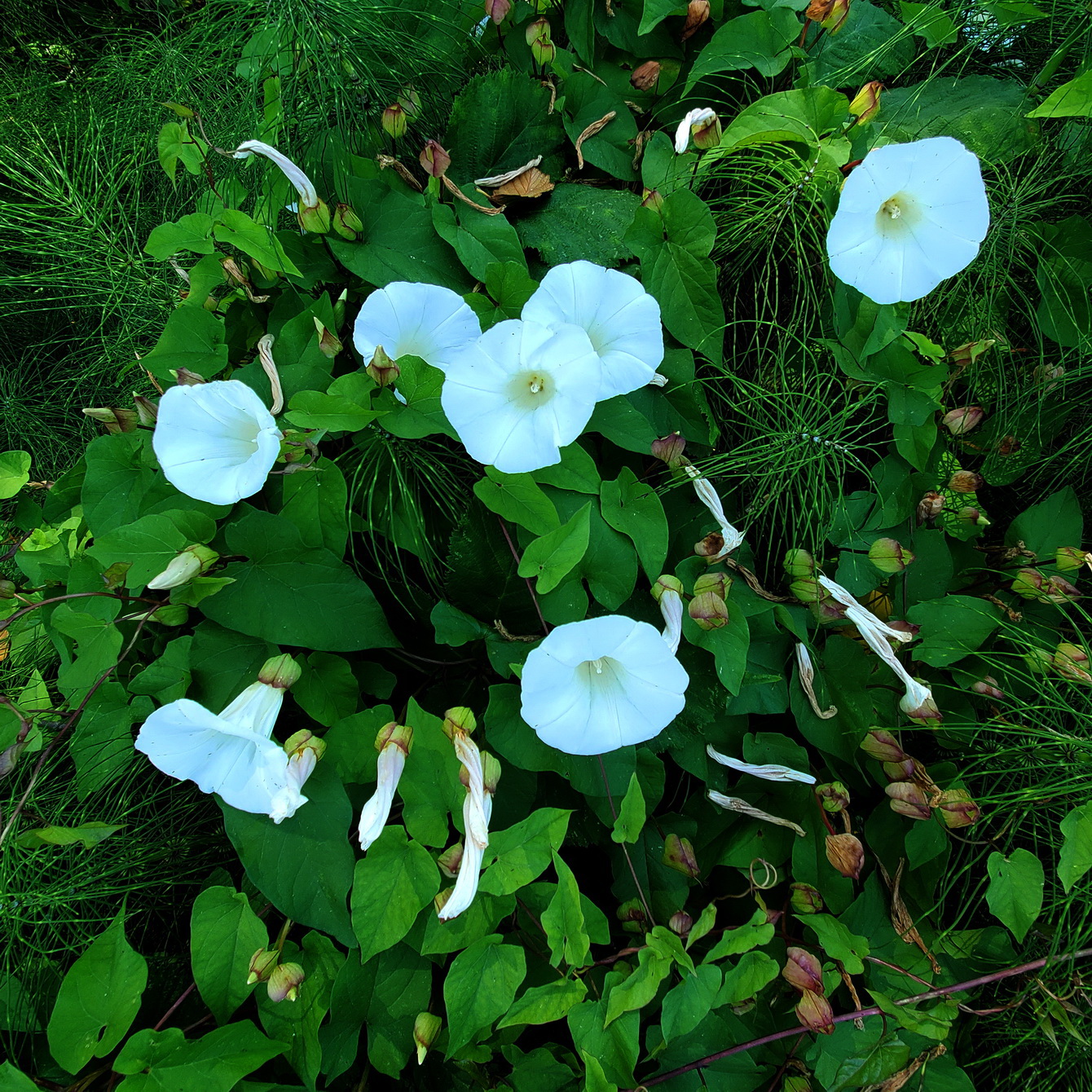
Pulling Stinging Nettle in Patches of Hedge Bindweed
As I fight my way through tall vegetation removing masses of Hedge Bindweed, I also pull out any Stinging Nettle I come across even though it may be native to the Pacific Northwest.
-

It’s Not too Late for Hedge Bindweed
I know it has already started blooming, but I don’t think it’s too late to work on the Hedge Bindweed. Since I don’t know how to eradicate this invasive, I’m only trying to contain it . . .
-
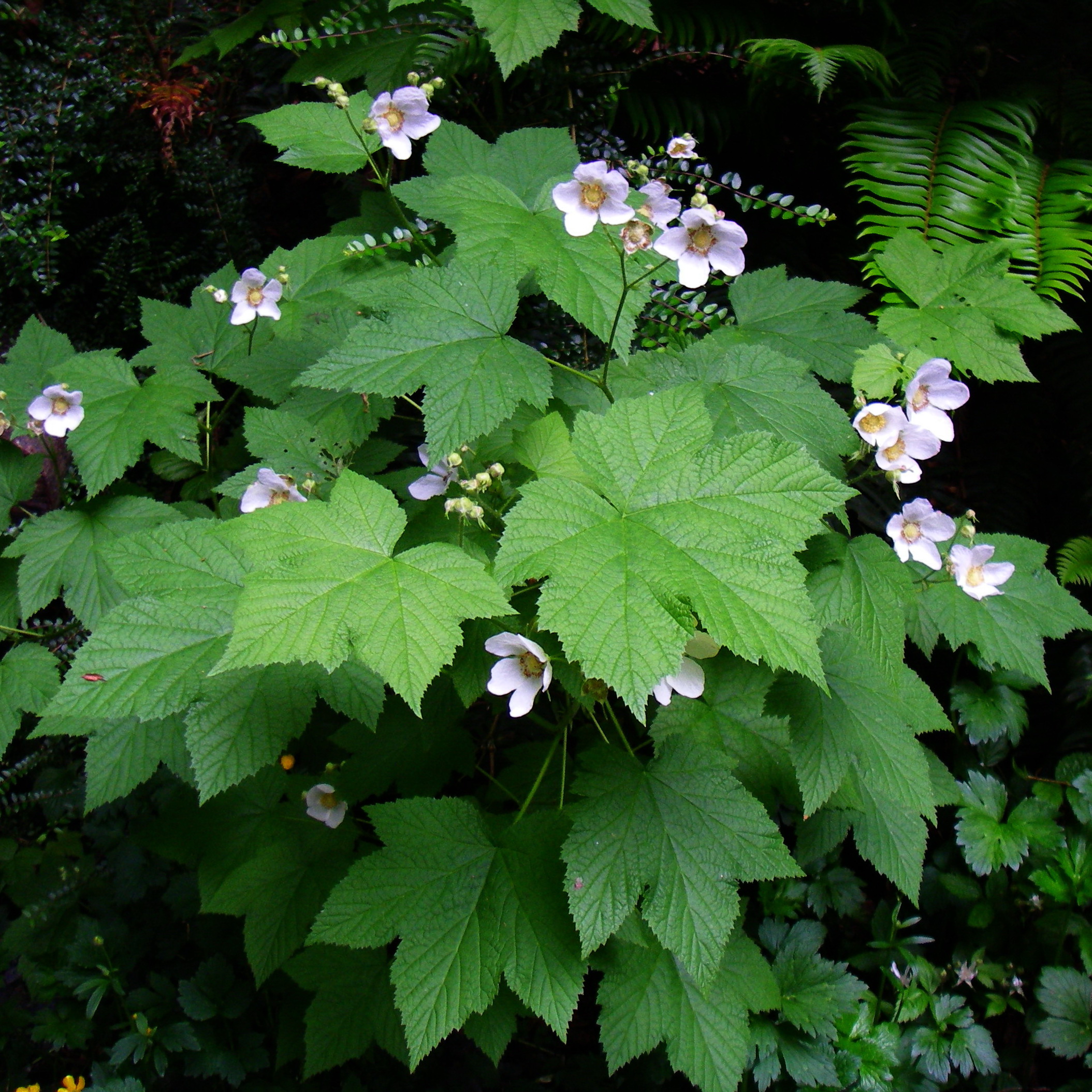
Gardening with Native Plants
In addition to the removal of invasive plants, forest restoration involves efforts to regenerate native plants.
-
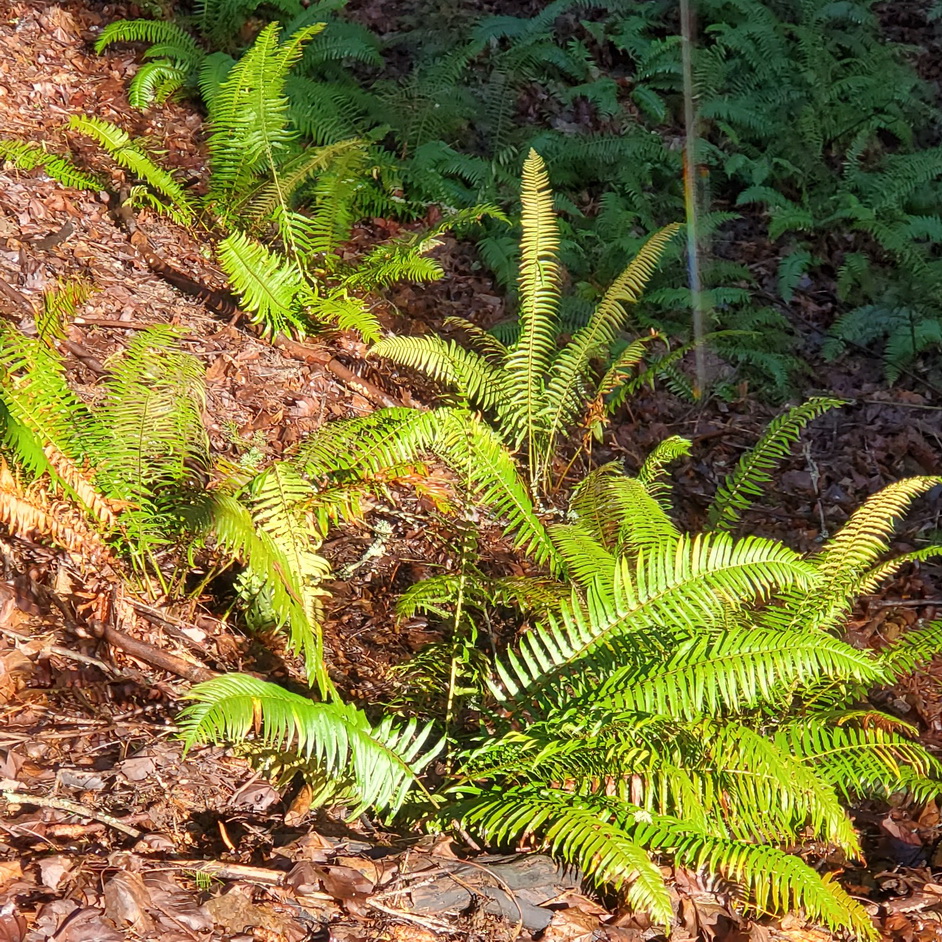
Glad to have “Mudded In”
I’ve spent the last few mornings watering plants in the midst of this all-time record heatwave in our region. When I planted these trees, shrubs, and ferns back in March and April, I took the extra time and effort to mud them in and, where possible, create basins around them to hold water. I’m glad…
-

An Activity to Celebrate the Summer Solstice
I’m thinking of a nice outdoor activity to celebrate tomorrow’s summer solstice — deciding on the trees I’m going to plant in late Fall.
-
Choosing the Right Trees to Plant in Our Urban Forests
We have opportunities to plant many trees in our urban forests, but what species should we choose?
-
To Plant or Not to Plant: Three Phases in the Growth of Forests
In my last blog, I left off questioning if it makes sense to plant new trees under the canopy of forests, since the existing trees accumulate mass at an ever-increasing rate. I think part of the answer lies in the stages of forest growth in terms of three broad phases of overall biomass accumulation.
-
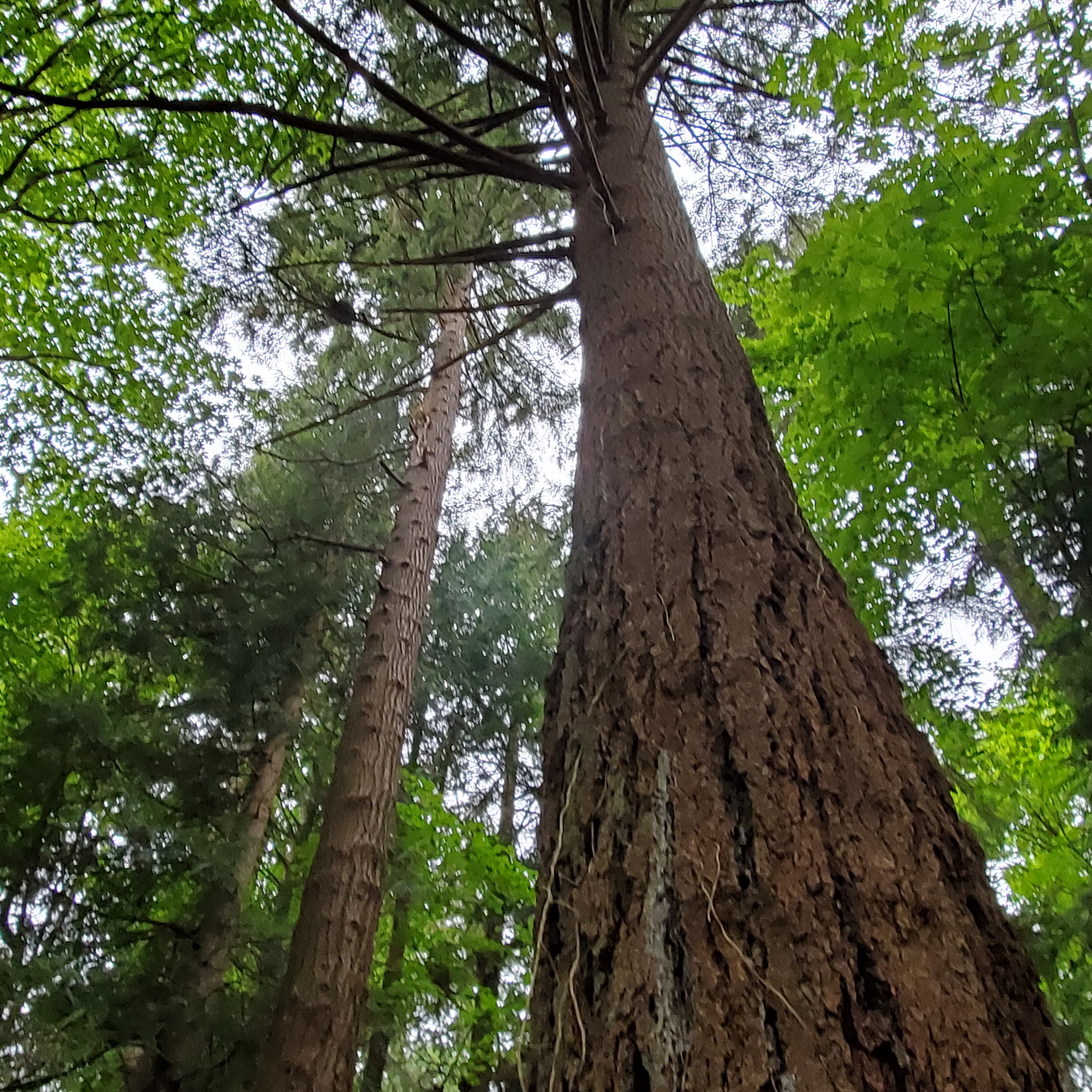
Big Trees Grow Faster Than Small Trees
The largest Douglas Fir in Forest Park has a circumference of over 20’ and is estimated to be 176’ tall. It surprised me to learn that it is probably growing faster than any other Douglas Fir in the park.
-

The Bradley Method of Bushland Regeneration
I thank Luke McGuff (who works at North Beach Park) for telling me about the Bradley Method of “bushland regeneration.” The method is named after two sisters, Eileen and Joan Bradley, who developed a successful method of restoring native vegetation to degraded natural areas in Australia. Their ideas are relevant anywhere, including our backyard forests…
-
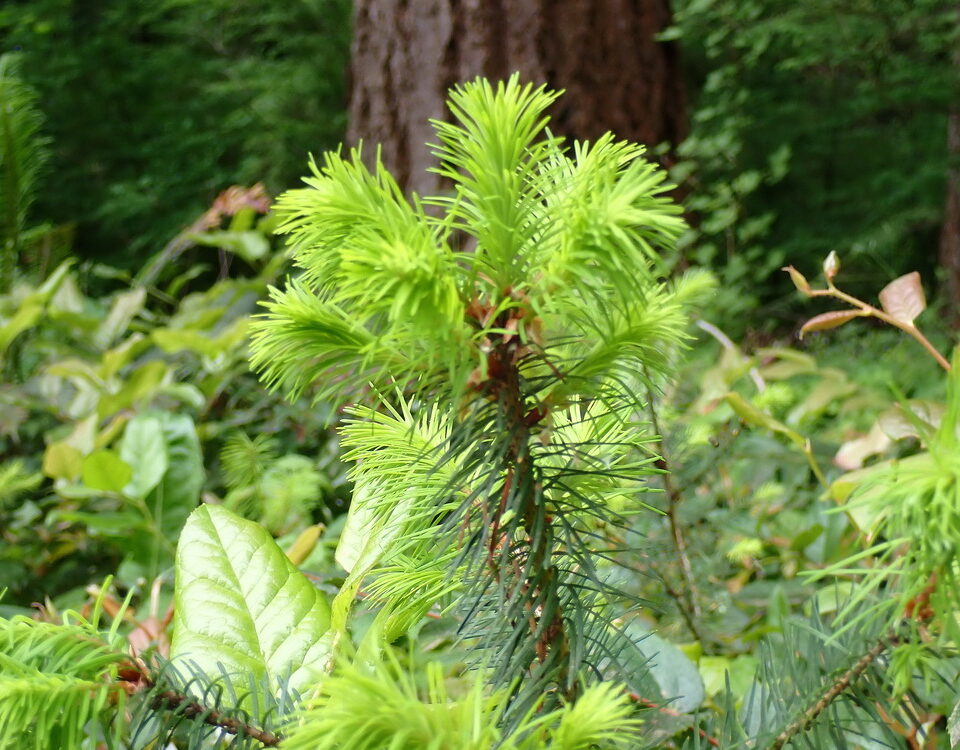
Volunteer Douglas Firs
The other day, I was surprised and delighted to find a half-dozen volunteer Douglas Fir seedlings in a spot that might actually get enough sunlight to support them.
-
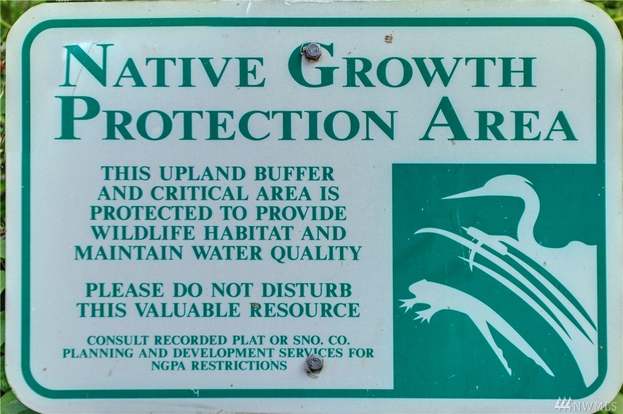
Forest Restoration in Native Growth Protection Areas
For years I’ve noticed signs posted in front of patches of urban forest with titles like “Native Growth Protection Area.” I wondered how these areas were protected, and who was responsible for controlling invasive plants on them?
-
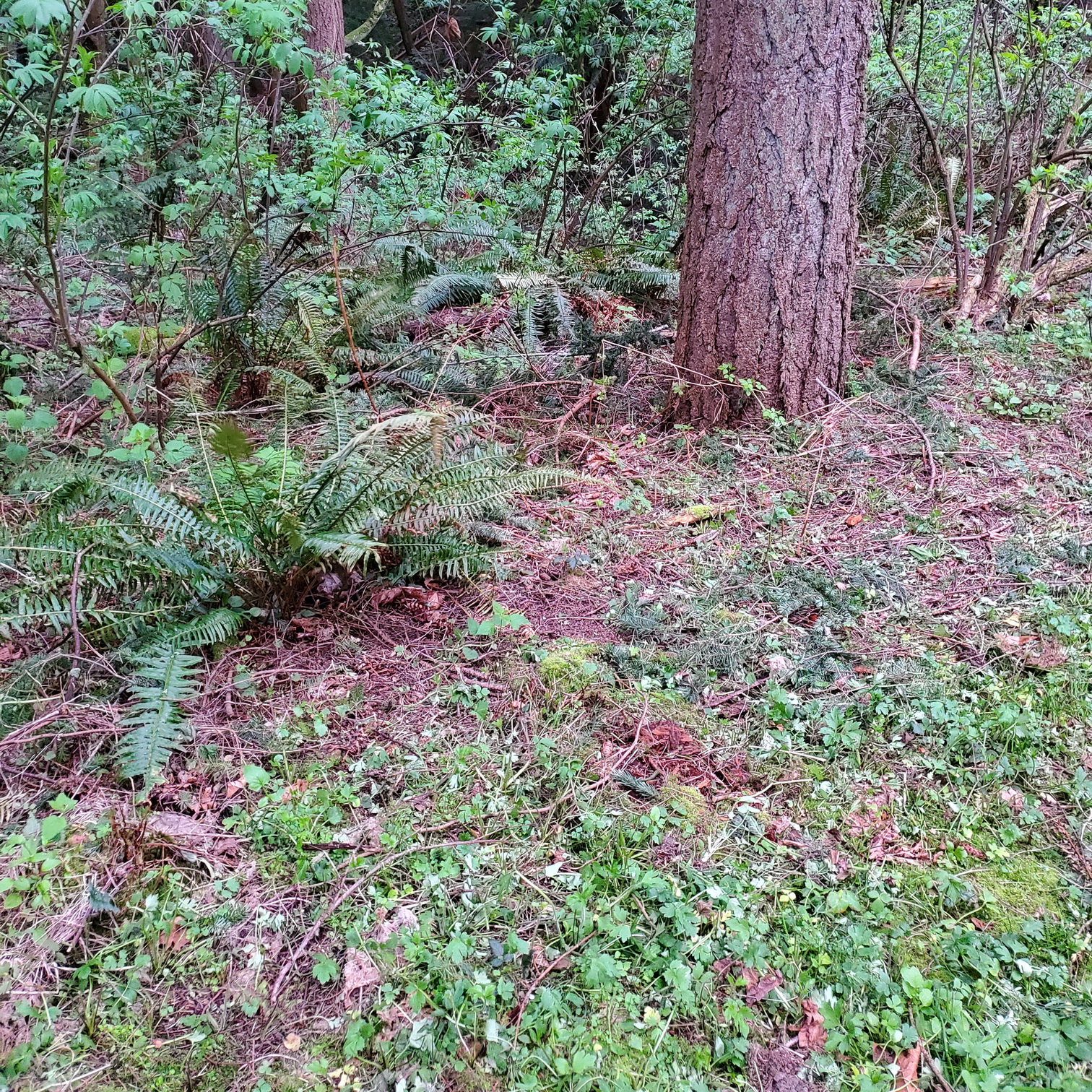
Forest Edges — Problems and Possibilities
Since the edges of the forest are often sunny, they provide the opportunity to grow a large diversity of native plants, but weeds can be a problem.
-
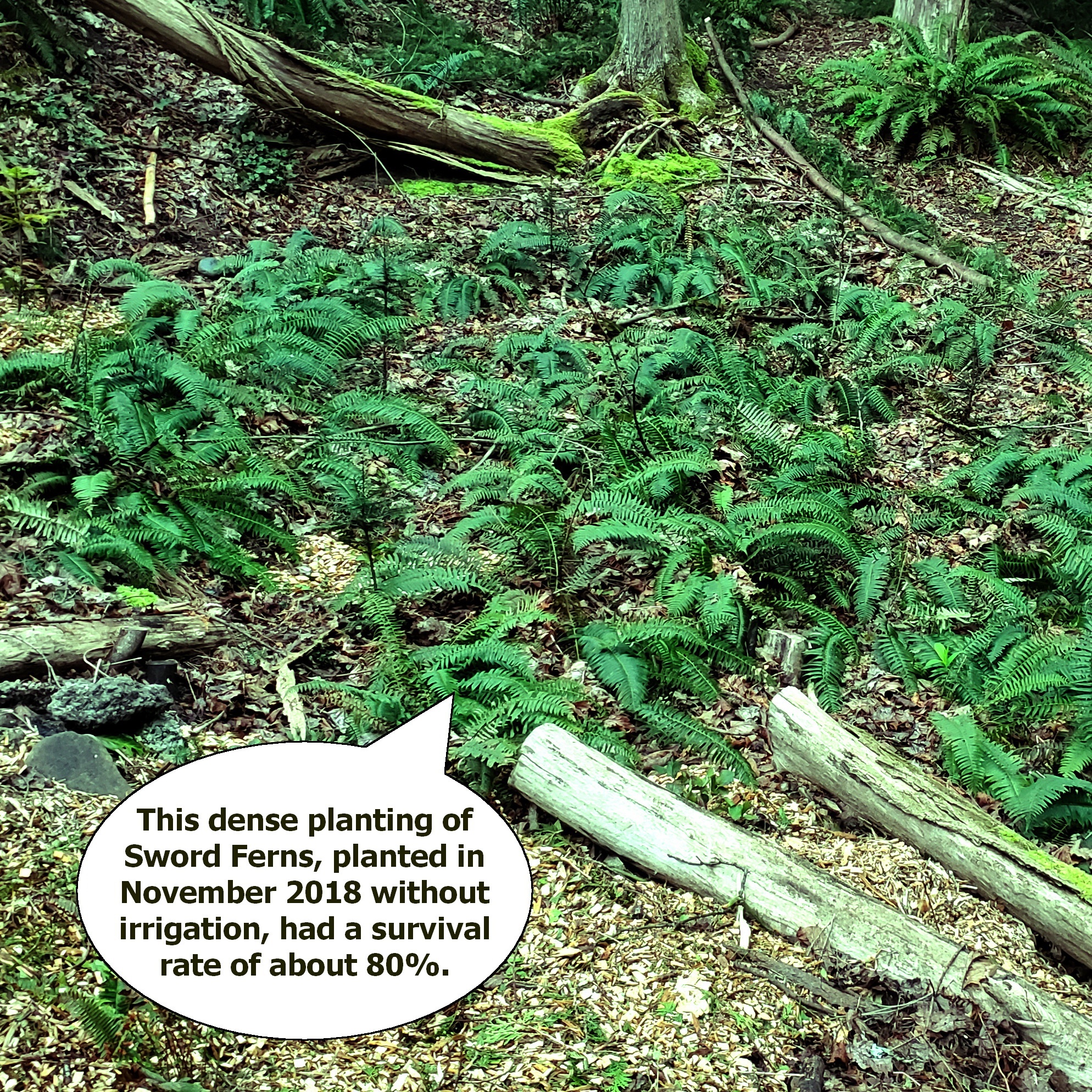
The Sobering Cost of High-Density Planting
Using the spacing guidelines from the Green Seattle Partnership and current retail prices from a local native plant nursery I estimate that installing a dense planting of natives on a site measuring only 10’ by 10’ (100 square feet) would cost about $470.
-
How Much Time Will it Take to Restore Your Backyard Forest?
Like many residents in the Puget lowland, you may have infestations of invasive plants in your backyard forest that you want to tackle – more than you can remove in an afternoon, and perhaps more than you can remove in a dozen afternoons. You could just dive in and start pulling weeds, but you may…
-
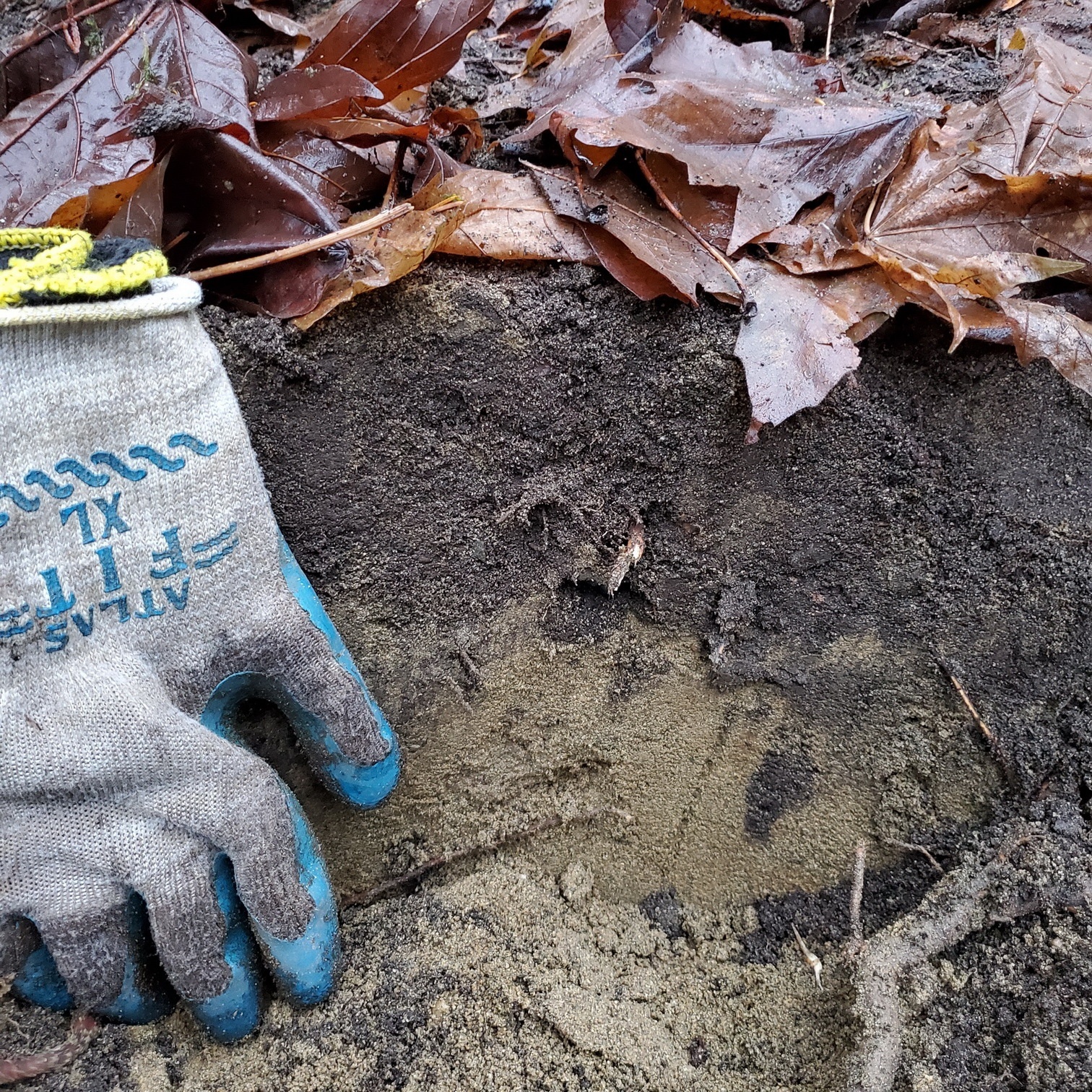
Done Well, Forest Restoration Includes Caring for the Soil
The rate of topsoil formation in our region is painfully slow – less than 1” every 2,000 years. Only 7” has accumulated (at most) since the last glacier retreated 15,000 years ago.
-
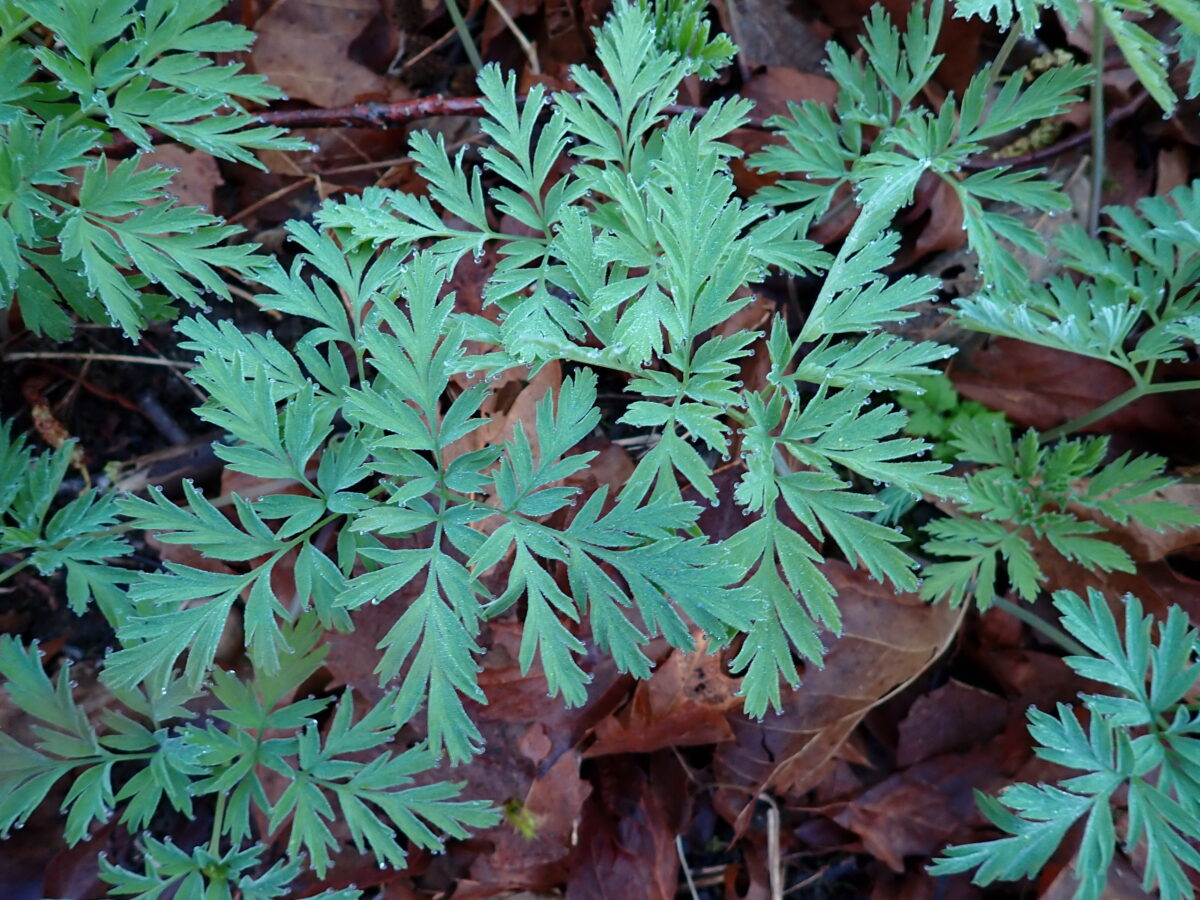
Multiplication by Division in our Backyard Forests
March is here, the best time to start multiplying and dividing in earnest – multiplying some of the native plants we already have growing in our backyard forests, using a plant propagation method known as division.
-
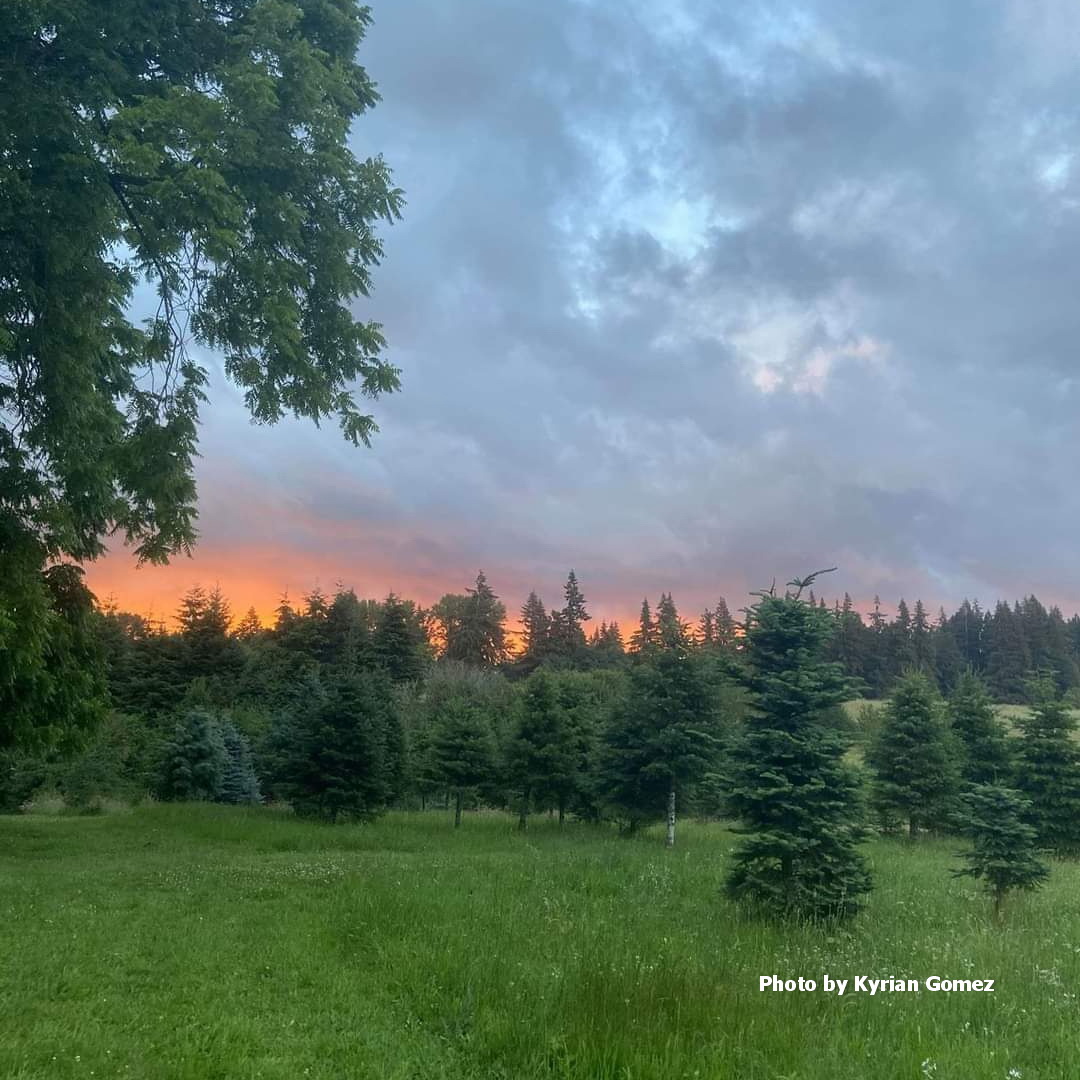
Taking Root on a Christmas Tree Farm
My personal journey to the field of environmental work in Washington didn’t stem from camping in state parks or hiking trips up in the mountains. It actually started with me growing up in a place where trees were grown specifically to be cut and sold: A Christmas tree farm.
-
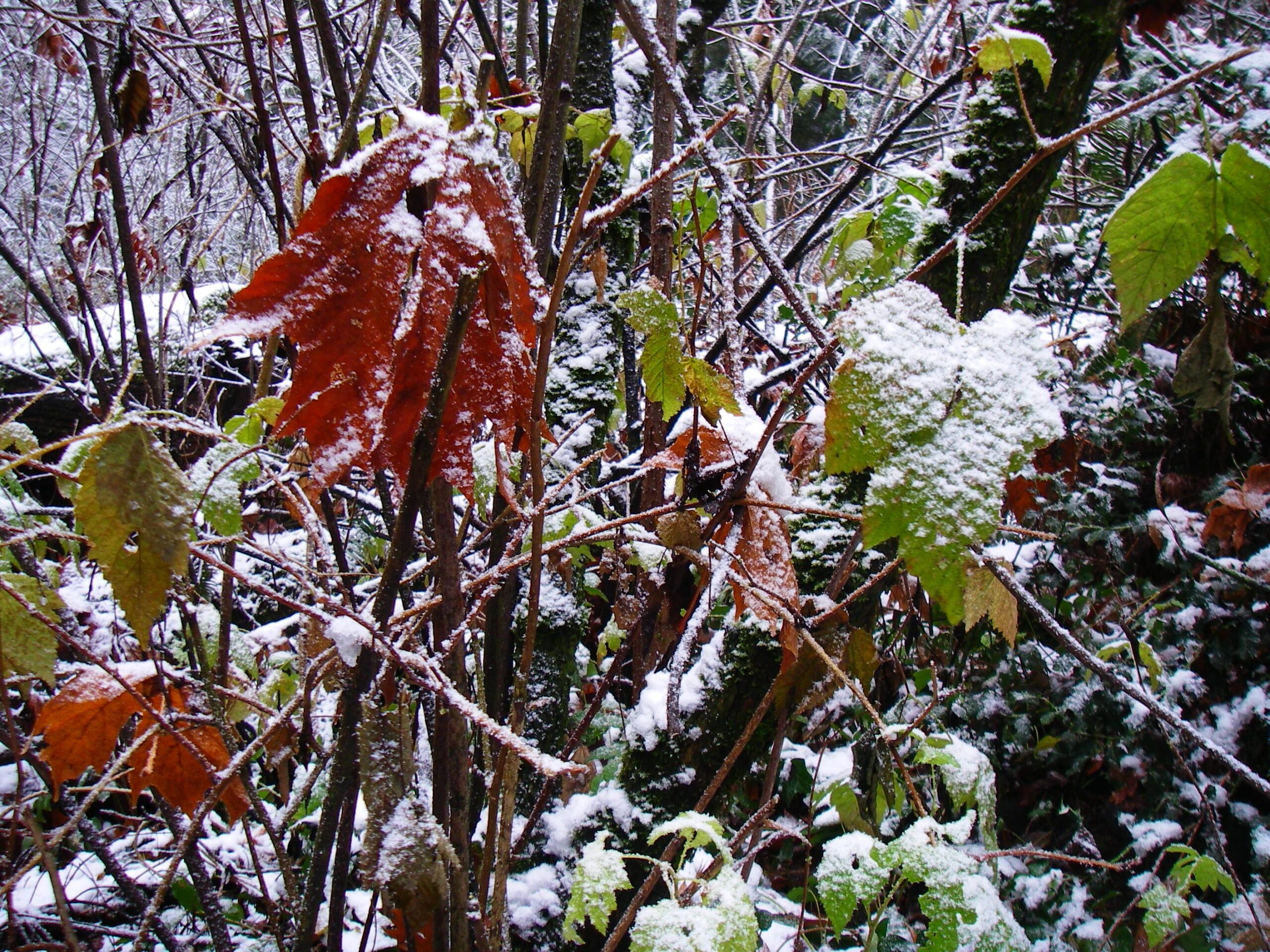
The Changing Seasons
We are having a brief blast of winter weather in the Puget Sound region – a good time to think about the work year ahead.